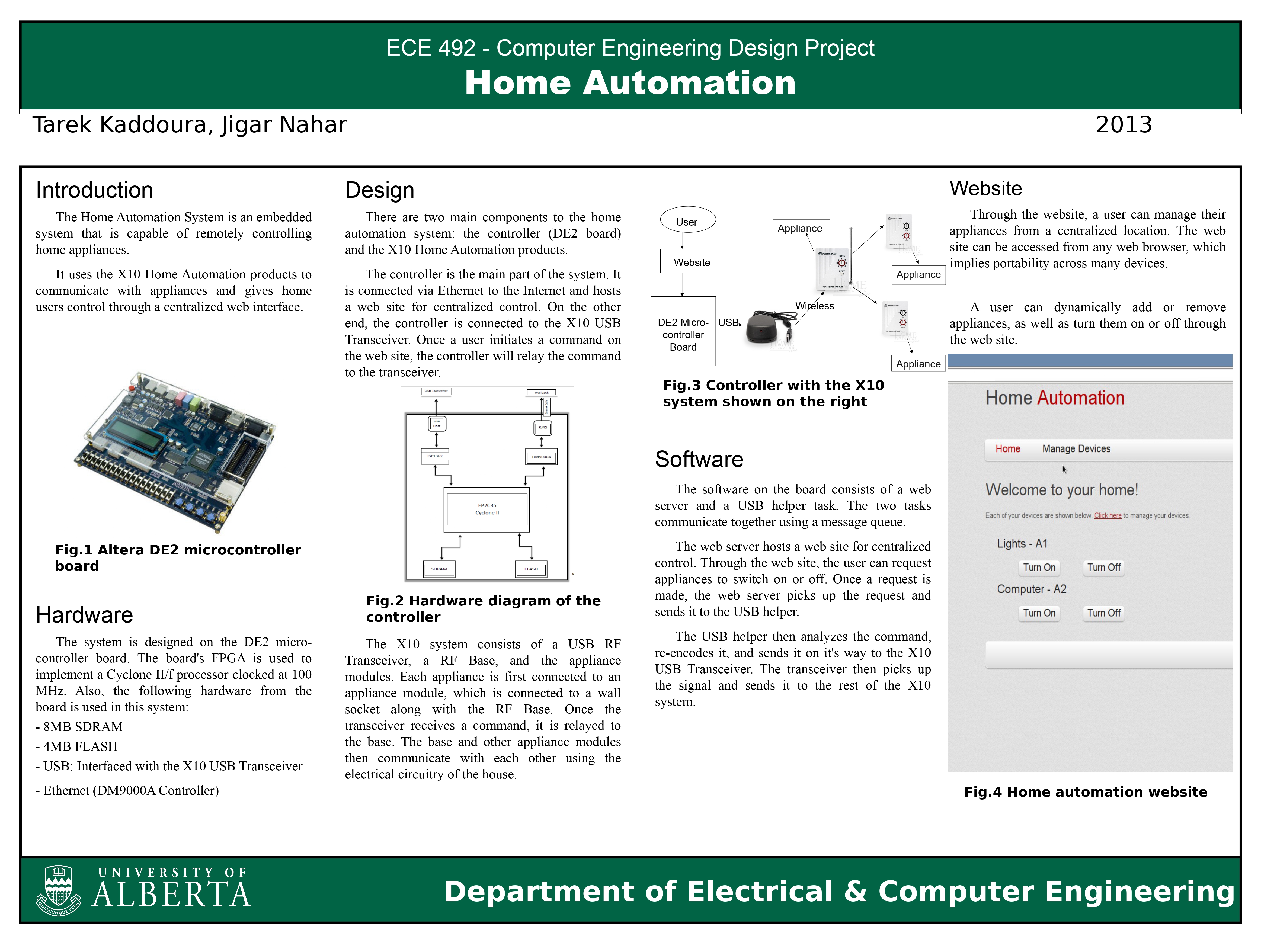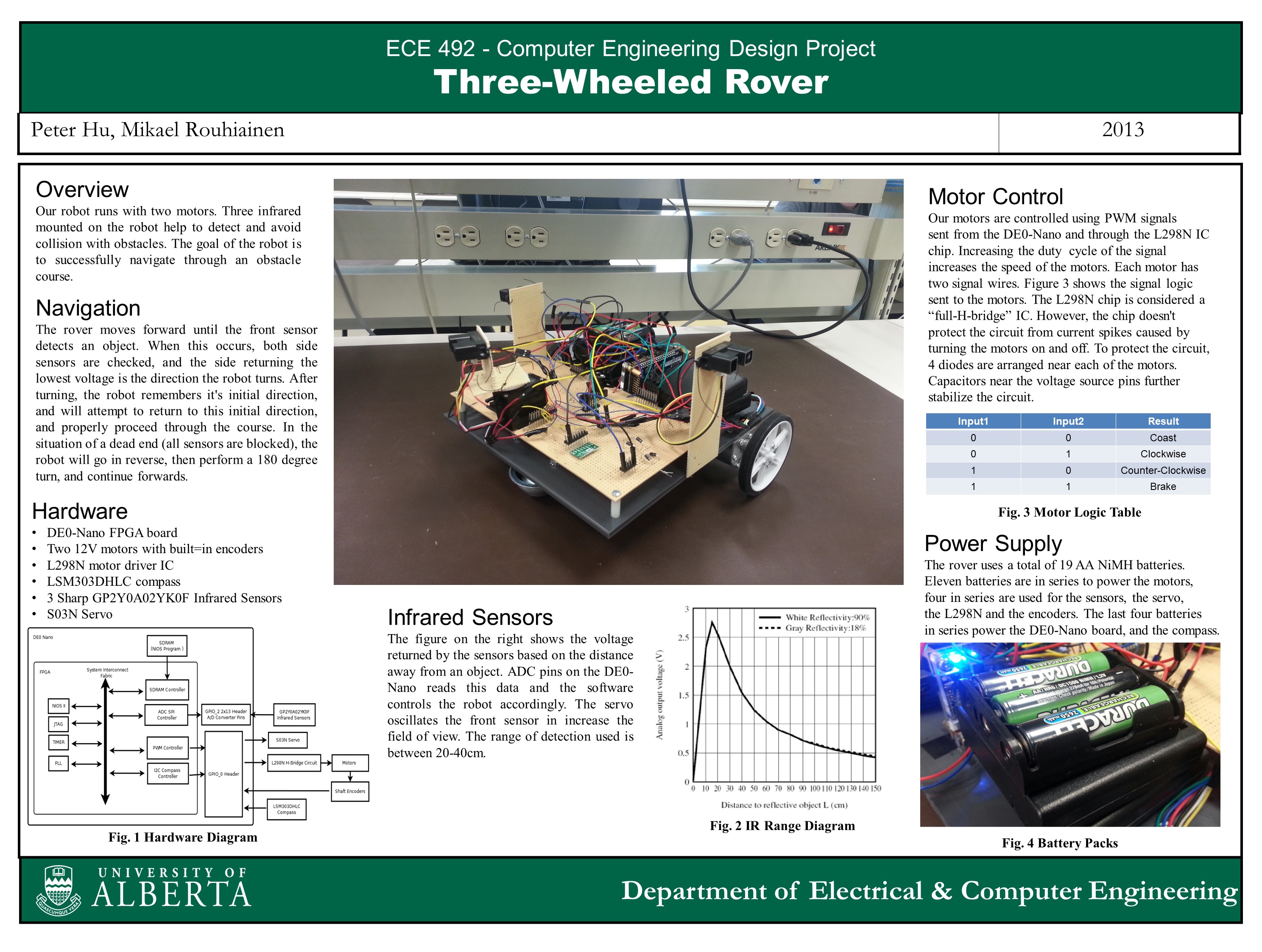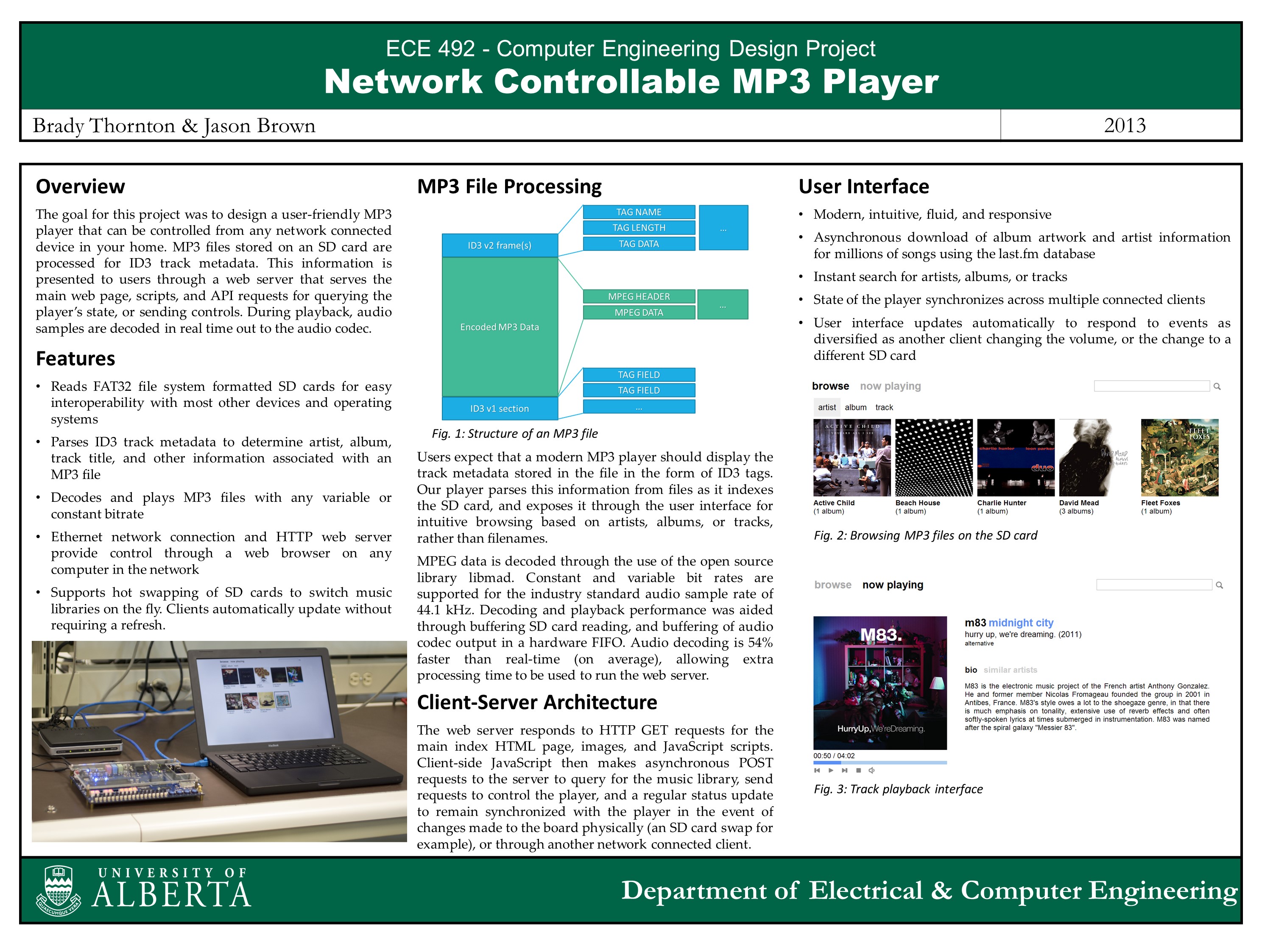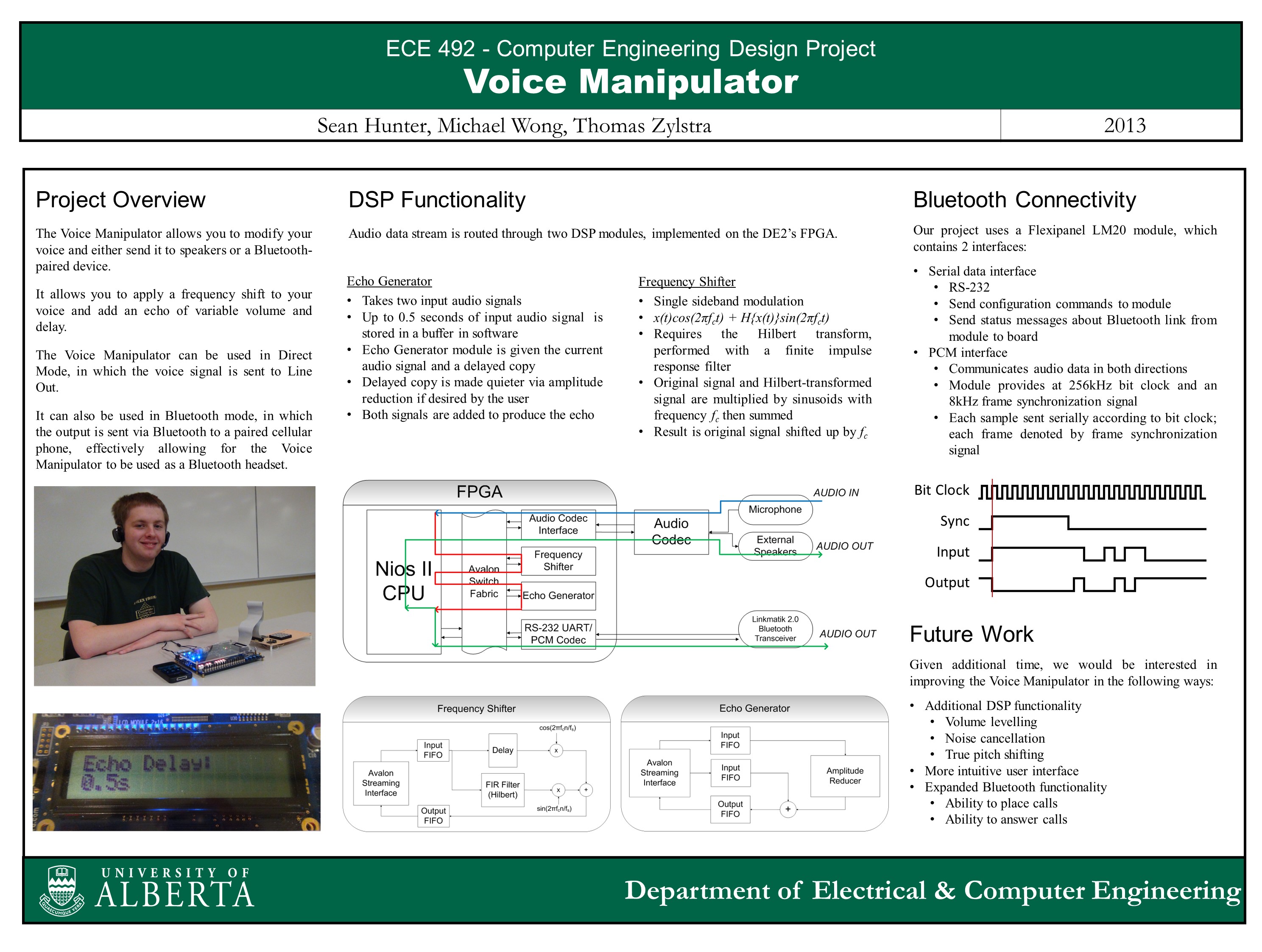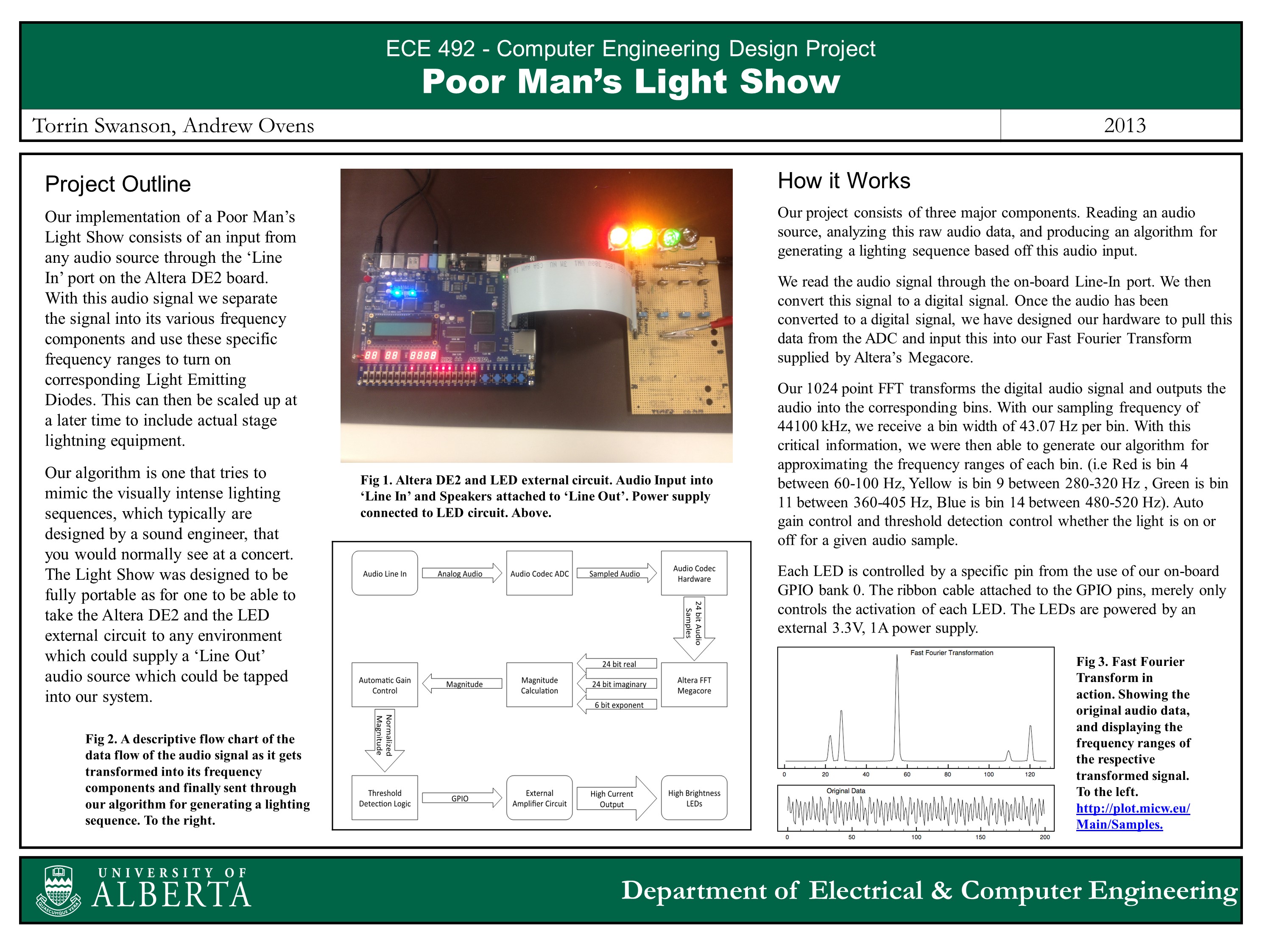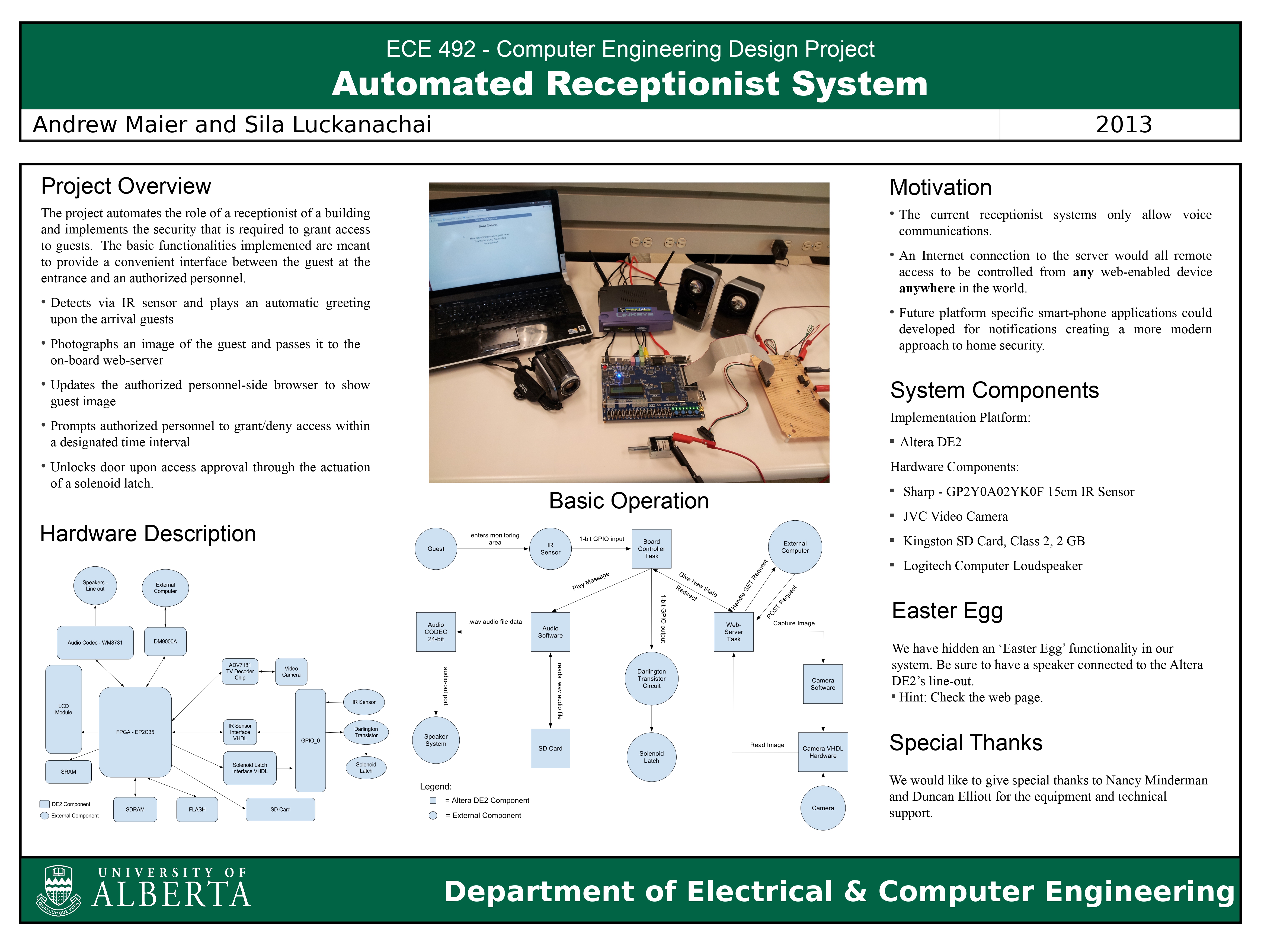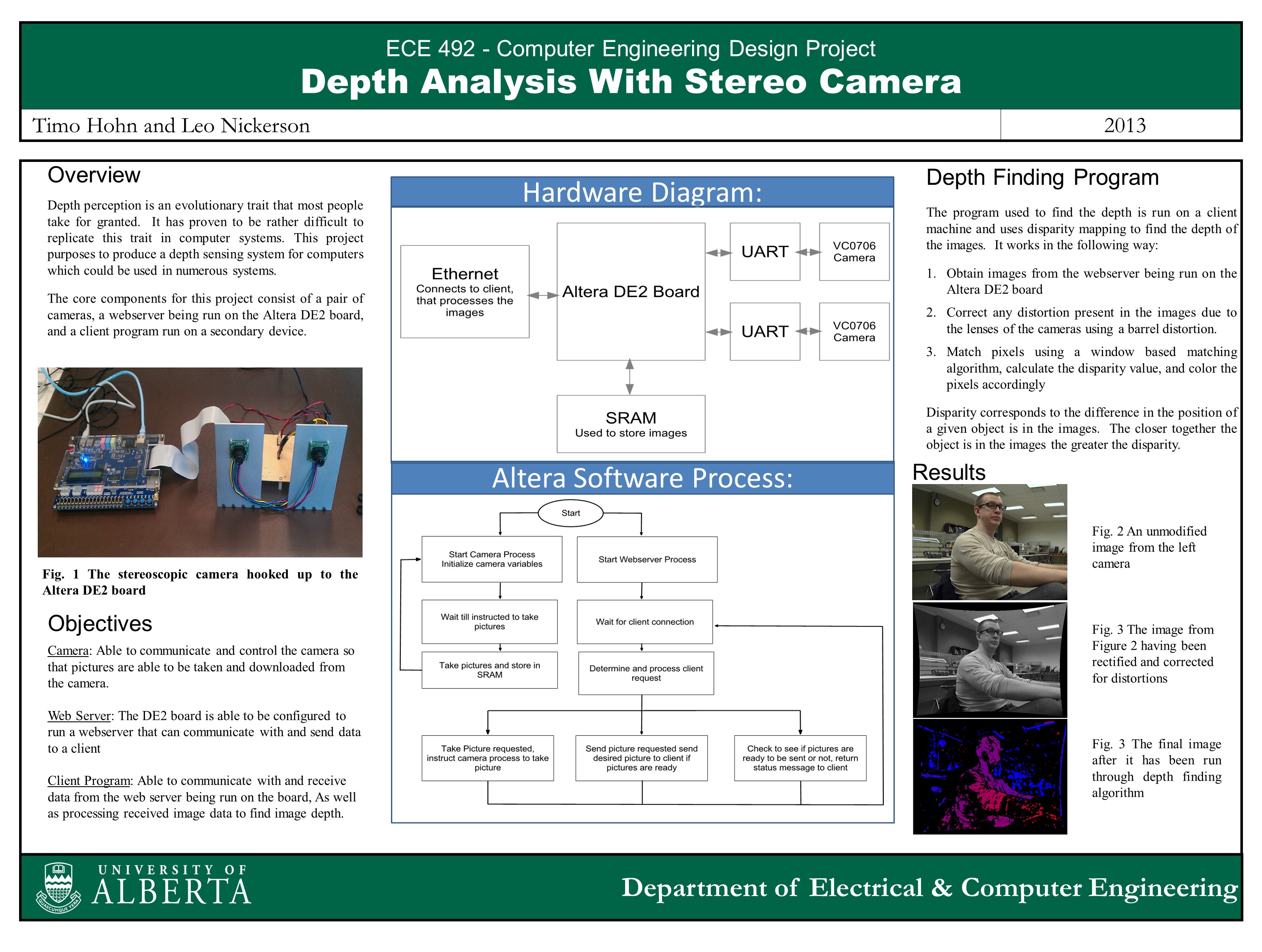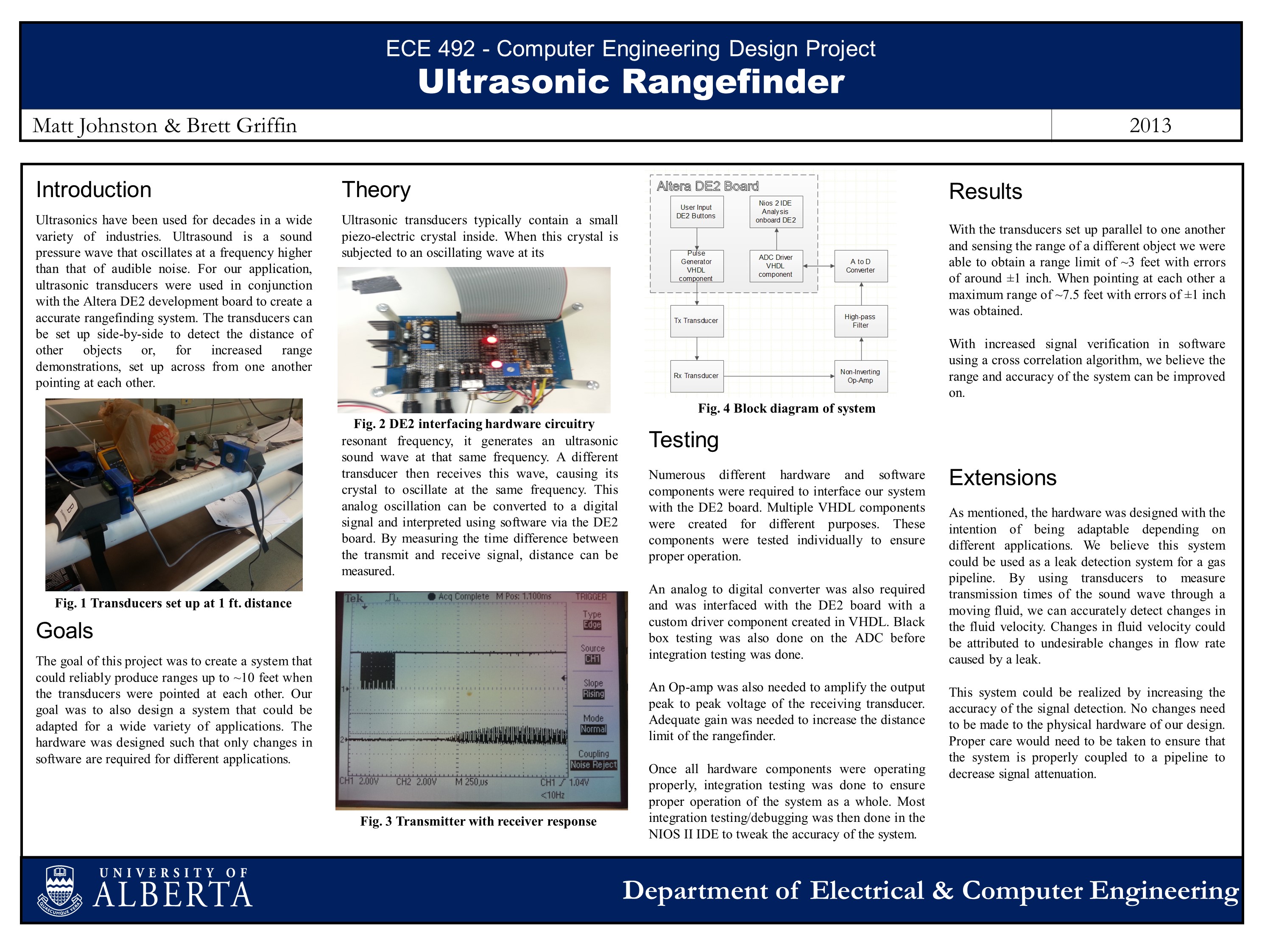Team Members: Tarek Kaddoura, Jigar Nahar
The Home Automation System is an embedded system that is capable of remotely controlling home appliances. It uses the X10 Home Automation products to communicate with appliances and gives home users control through a centralized web interface.
Discipline:Computer Engineering
Team Members: Peter Hu, Mikael Rouhiainen
Our robot runs with two motors. Three infrared mounted on the robot help to detect and avoid collision with obstacles. The goal of the robot is to successfully navigate through an obstacle course.
Discipline:Computer Engineering
Team Members: Paolo Villadarez, Shenhao Li
Our group created an image processing and image triangulation based projectile detection system with flight trajectory prediction functionalities. The core detection capabilities of our project functions similarly to a dumbed down version of the widely-known Hawk Eye detection system used in professional Tennis matches for line-call disputes. We also implemented a VGA controller to visually demonstrate the prediction ability of our system via a software based dartboard simulation.
Discipline:Computer Engineering
Team Members: Brady Thornton, Jason Brown
The goal for this project was to design a user-friendly MP3 player that can be controlled from any network connected device in your home. MP3 files stored on an SD card are processed for ID3 track metadata. This information is presented to users through a web server that serves the main web page, scripts, and API requests for querying the player’s state, or sending controls. During playback, audio samples are decoded in real time out to the audio codec.
Discipline:Computer Engineering
Team Members: Sean Hunter, Michael Wong, Thomas Zylstra
The Voice Manipulator allows you to modify your voice and either send it to speakers or a Bluetooth-paired device. It allows you to apply a frequency shift to your voice and add an echo of variable volume and delay. The Voice Manipulator can be used in Direct Mode, in which the voice signal is sent to Line Out. It can also be used in Bluetooth mode, in which the output is sent via Bluetooth to a paired cellular phone, effectively allowing for the Voice Manipulator to be used as a Bluetooth headset
Discipline:Computer Engineering
Team Members: Torrin Swanson, Andrew Ovens
Our implementation of a Poor Man’s Light Show consists of an input from any audio source through the ‘Line In’ port on the Altera DE2 board. With this audio signal we separate the signal into its various frequency components and use these specific frequency ranges to turn on corresponding Light Emitting Diodes. This can then be scaled up at a later time to include actual stage lightning equipment. Our algorithm is one that tries to mimic the visually intense lighting sequences, which typically are designed by a sound engineer, that you would normally see at a concert. The Light Show was designed to be fully portable as for one to be able to take the Altera DE2 and the LED external circuit to any environment which could supply a ‘Line Out’ audio source which could be tapped into our system
Discipline:Computer Engineering
Team Members: Andrew Maier and Sila Luckanachai
The project automates the role of a receptionist of a building and implements the security that is required to grant access to guests. The basic functionalities implemented are meant to provide a convenient interface between the guest at the entrance and an authorized personnel. ● Detects via IR sensor and plays an automatic greeting upon the arrival guests ● Photographs an image of the guest and passes it to the on-board web-server ● Updates the authorized personnel-side browser to show guest image ● Prompts authorized personnel to grant/deny access within a designated time interval ● Unlocks door upon access approval through the actuation of a solenoid latch.
Discipline:Computer Engineering
Team Members: Elysia Jong, Eric (Qingyue) Zhou
This project is a virtual guitar imitation device, realized by several sensors and an accelerometer attached onto two gloves. There are 7 tactile sensors corresponding to 7 notes on the left glove. On the right glove, there are 4 tactile sensors to change options, implemented as Reset, Mode Switch, Octave Up, and Octave Down (on the fingertips), in addition to an accelerometer. To play, the user should touch their left thumb to a note sensor and make a strumming action with their right arm as if playing a guitar in the air.
Discipline:Computer Engineering
Team Members: Timo Hohn, Leo Nickerson
Depth perception is an evolutionary trait that most people take for granted. It has proven to be rather difficult to replicate this trait in computer systems. This project purposes to produce a depth sensing system for computers which could be used in numerous systems. The core components for this project consist of a pair of cameras, a webserver being run on the Altera DE2 board, and a client program run on a secondary device.
Discipline:Computer Engineering
Team Members: Matt Johnson, Brett Griffin
Ultrasonics have been used for decades in a wide variety of industries. Ultrasound is a sound pressure wave that oscillates at a frequency higher than that of audible noise. For our application, ultrasonic transducers were used in conjunction with the Altera DE2 development board to create a accurate rangefinding system. The transducers can be set up side-by-side to detect the distance of other objects or, for increased range demonstrations, set up across from one another pointing at each other.
Discipline:Computer Engineering
Explore
Explore projects from other disciplines!
